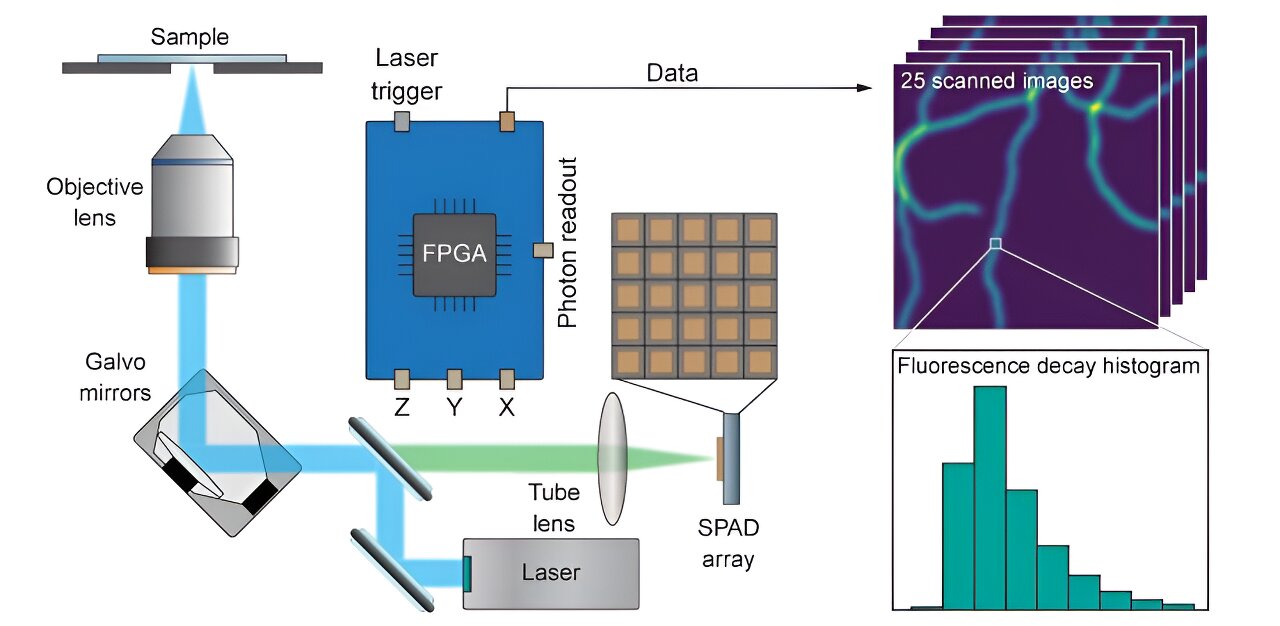The field of laser scanning microscopy is rapidly advancing due to the emergence of fast and compact detector arrays, which are replacing the traditional single-element detectors in confocal laser scanning microscopes. This innovation has unlocked new and distinctive capabilities.
The detector arrays provide additional spatial information, enabling a super-resolution technique called image scanning microscopy (ISM). ISM uses computational methods to create a single image from a raw multidimensional dataset captured by a microscope, resulting in an image with superior signal-to-noise ratio (SNR), optical sectioning, and spatial resolution compared to traditional confocal microscopes.
Specifically, the lateral resolution of ISM images can exceed Abbe’s limit by up to a factor of two. These benefits, however, are achieved by leveraging only spatial information. To further enhance modern fluorescence bioimaging, time-resolved acquisition can be utilized to access structural and functional information encoded in fluorescence dynamics, such as fluorescence lifetime.
Recently, a team of researchers at the Italian Institute of Technology (IIT) in Genoa developed a compact and efficient ISM microscope equipped with a single photon avalanche diode (SPAD) array detector, capable of delivering high-resolution structural and functional imaging in a single device. The findings have been published in Advanced Photonics.
The SPAD array detector consists of 25 independent diodes arranged in a square grid. Its small size and asynchronous read-out enable rapid detection of incoming fluorescence photons. The data acquisition method, based on the digital frequency domain (DFD) technique, is a heterodyne sampling approach that allows the construction of fluorescence decay histograms with a timing resolution as low as 400 ps, suitable for most fluorescence imaging applications.
2024-02-07 02:00:04
Article from phys.org
